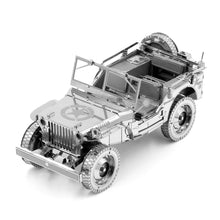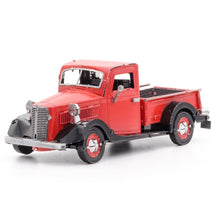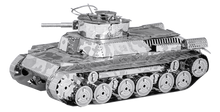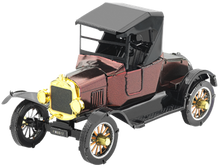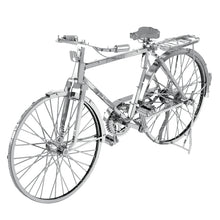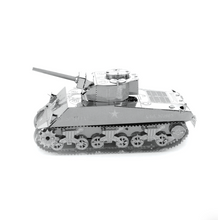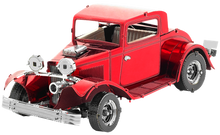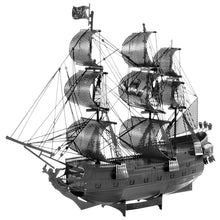
Willys Overland
Were highly successful off-road capable, light, military utility vehicles, built in large numbers to a standardized design, from 1941 to 1945, for the Allied forces in World War II.
Number of sheets - 2 Sheets
Difficulty - Challenging
Assembled Size: 3.8"L x 1.5"W x 1.6"H
(9.65 x 3.81 x 4.06 cm)
(9.65 x 3.81 x 4.06 cm)
PREMIUM SERIES CLASSIC BICYCLE
First seen in the 1880s, it was labeled the safety bicycle. It featured equally sized wheels, a chain drive to the rear wheel, pneumatic tires, and a front wheel with significant castor. Susan B. Anthony, the American feminist, called it the first bicycle that was suitable for women and labeled it the “freedom machine.”
Number of sheets:2 Sheets
Difficulty:Challenging
Assembled Size:5.75"L x 1.75"W x 3"H
(14.61 x 4.45 x 7.62 cm)
(14.61 x 4.45 x 7.62 cm)
STEAM LOCOMOTIVE
The Steam Locomotive is a train that produces its power from a steam engine. The train must carry its water either in the locomotive itself or in an attached car behind the locomotive. The steam is produced by burning coal, wood or oil. Steam engines dominated railway transportation from the early 19th century through the middle of the 20th century.
Item#:MMS033
Number of sheets:2 Sheets
Difficulty:Moderate
Assembled Size:4.33"L x 0.91"W x 1.18"H
(11 x 2.3 x 3 cm)
(11 x 2.3 x 3 cm)
Ages:14+
WILD WEST 2-6-0 LOCOMOTIVE
Item#:MMS190
Number of sheets:4 Sheets
Difficulty:Challenging
Assembled Size:7.68"L x 1.38"W x 1.89"H
(19.5 x 3.5 x 4.8 cm)
(19.5 x 3.5 x 4.8 cm)
Ages:14+
Item#:MMS191
Number of sheets:4 Sheets
Difficulty:Challenging
Assembled Size:7.09"L x 1.26"W x 1.65"H
(18 x 3.2 x 4.2 cm)
(18 x 3.2 x 4.2 cm)
Ages:14+
The Sherman Tank was the primary tank used by the United States during World War II. The tank was named after Union General William Tecumseh Sherman. Production exceeded 50,000 units. Only the Soviet T-34 tank was produced in larger numbers during World War II. Though it was wholly inadequate against the heavier armed 56 ton German Tiger I and the 72 ton Tiger II, mobility, mechanical reliability, and sheer numbers helped offset their disadvantages strategically.
Item#: MMS204
Number of sheets:2 Sheets
Difficulty: Moderate
FIRE ENGINE
Fire engines are specifically designed to fight fires and often include a larger telescopic-ladder mounted on a turntable at the back of the truck's chassis. Most also include a water tank with an onboard pump, a fire hose, an aerial ladder and multiple ground ladders.
DifficultyModerate













